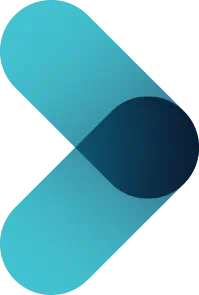GIVE NOW before 2025 ends—your gift will be doubled to help children in need. Click here to 2x your impact!

Ranked nationally in pediatric care.
Arkansas Children's provides right-sized care for your child. U.S. News & World Report has ranked Arkansas Children's in seven specialties for 2025-2026.

It's easier than ever to sign up for MyChart.
Sign up online to quickly and easily manage your child's medical information and connect with us whenever you need.

We're focused on improving child health through exceptional patient care, groundbreaking research, continuing education, and outreach and prevention.

When it comes to your child, every emergency is a big deal.
Our ERs are staffed 24/7 with doctors, nurses and staff who know kids best – all trained to deliver right-sized care for your child in a safe environment.

Arkansas Children's provides right-sized care for your child. U.S. News & World Report has ranked Arkansas Children's in seven specialties for 2025-2026.

Looking for resources for your family?
Find health tips, patient stories, and news you can use to champion children.

Support from the comfort of your home.
Our flu resources and education information help parents and families provide effective care at home.

Children are at the center of everything we do.
We are dedicated to caring for children, allowing us to uniquely shape the landscape of pediatric care in Arkansas.

Transforming discovery to care.
Our researchers are driven by their limitless curiosity to discover new and better ways to make these children better today and healthier tomorrow.

We're focused on improving child health through exceptional patient care, groundbreaking research, continuing education, and outreach and prevention.

Then we're looking for you! Work at a place where you can change lives...including your own.

When you give to Arkansas Children's, you help deliver on our promise of a better today and a healthier tomorrow for the children of Arkansas and beyond

Become a volunteer at Arkansas Children's.
The gift of time is one of the most precious gifts you can give. You can make a difference in the life of a sick child.

Join our Grassroots Organization
Support and participate in this advocacy effort on behalf of Arkansas’ youth and our organization.

Learn How We Transform Discovery to Care
Scientific discoveries lead us to new and better ways to care for children.

Learn How We Transform Discovery to Care
Scientific discoveries lead us to new and better ways to care for children.

Learn How We Transform Discovery to Care
Scientific discoveries lead us to new and better ways to care for children.

Learn How We Transform Discovery to Care
Scientific discoveries lead us to new and better ways to care for children.

Learn How We Transform Discovery to Care
Scientific discoveries lead us to new and better ways to care for children.

Learn How We Transform Discovery to Care
Scientific discoveries lead us to new and better ways to care for children.

When you give to Arkansas Children’s, you help deliver on our promise of a better today and a healthier tomorrow for the children of Arkansas and beyond.

Your volunteer efforts are very important to Arkansas Children's. Consider additional ways to help our patients and families.

Join one of our volunteer groups.
There are many ways to get involved to champion children statewide.

Make a positive impact on children through philanthropy.
The generosity of our supporters allows Arkansas Children's to deliver on our promise of making children better today and a healthier tomorrow.

Read and watch heart-warming, inspirational stories from the patients of Arkansas Children’s.

Hello.

Arkansas Children's Hospital
General Information 501-364-1100
Arkansas Children's Northwest
General Information 479-725-6800

Ureteral Duplication
What is ureteral duplication?
Ureteral duplication occurs when a child is born with two ureters attached to a kidney instead of one. The ureter is the tube that drains urine from the kidney into the bladder. Ureteral duplication is a condition that a baby is born with and is more common in girls than in boys. It can occur in one or both kidneys.Children born with ureteral duplication may also have a related conditions. These may include hydronephrosis (swelling of the kidney), ureterocele (abnormal insertion of ureter into bladder obstructing flow), ectopic ureter (ureter enters bladder or, in girls, vagina at abnormal location), or VUR (urine refluxes from bladder toward kidney).
What are the signs and symptoms of ureteral duplication?
Many children do not have any symptoms. In some cases, ureteral duplication may be diagnosed by a prenatal ultrasound before birth.If you child does have symptoms, they may include:
- Urinary tract infections
- Leakage of urine or incontinence
What causes ureteral duplication?
Experts don’t know what causes ureteral duplication. In some cases, the condition may run in families.How is ureteral duplication treated?
Your child’s treatment will depend on their specific symptoms and how the ureteral duplication affects their urinary system. Some children may not need any treatment. The Division of Urology at Arkansas Children’s is experienced in treating ureteral duplication and will work with you to come up with the best treatment plan for your child.Possible treatment options may include:
- Antibiotics to treat or prevent urinary tract infections
- Observation of the condition over time
- Surgery to re-route or remove some of the ureter

Appointments
New and existing patients can visit our appointment hub for several ways to request an appointment, including online scheduling for many services.
Request an appointment
